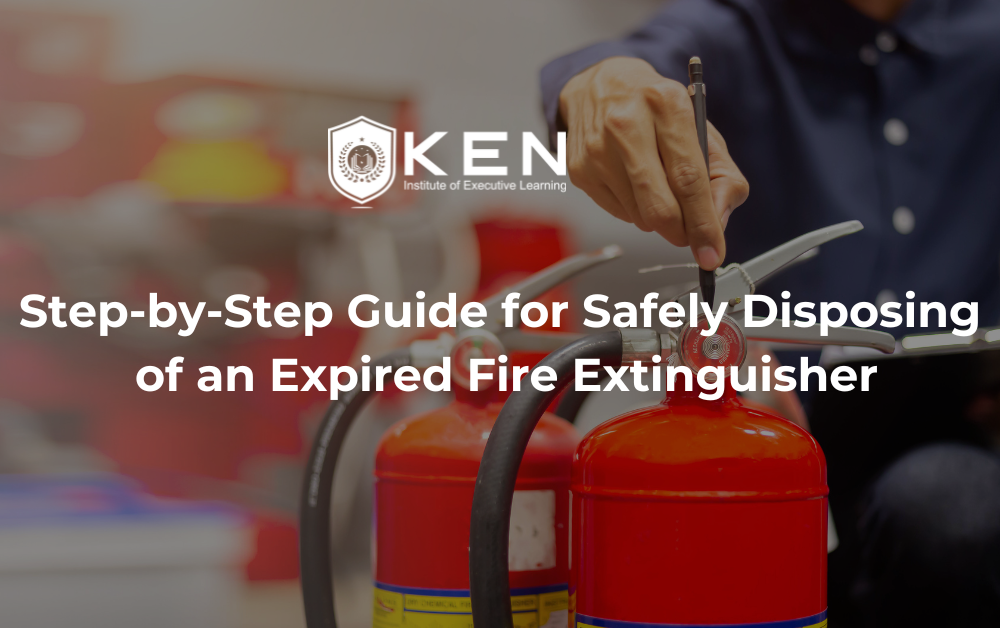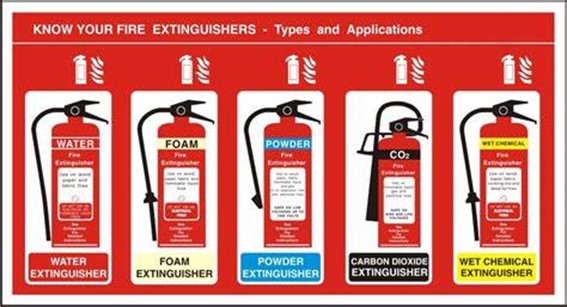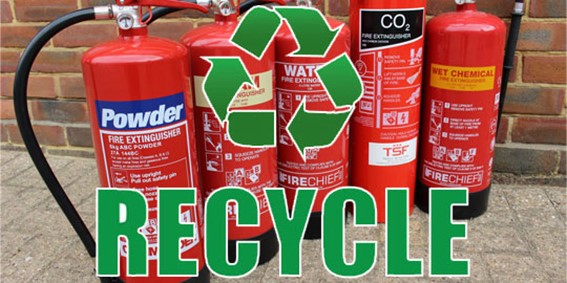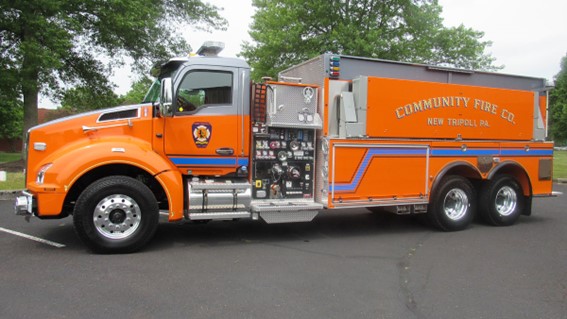
Fire extinguishers are essential tools for fire safety, ensuring small fires can be controlled before they escalate. However, like any equipment, fire extinguishers have a limited lifespan. Proper disposal is crucial to ensure environmental safety and compliance with local regulations when they become damaged, expired, or no longer functional. Proper disposal of fire extinguishers requires careful attention to ensure safety, compliance with local regulations, and environmental responsibility.
Here’s a step-by-step guide to help you do it properly that explains how to properly dispose of a fire extinguisher, emphasizing eco-friendly practices and safety protocols.
Comprehensive breakdown of the process for safely disposing of an expired fire extinguisher:
Step 1: Determine the Type of Fire Extinguisher
Different types of fire extinguishers have unique components and disposal requirements. Common types include:
- Dry Chemical (most common, contains powder like monoammonium phosphate)
- CO₂ (Carbon Dioxide) (pressurized CO₂ gas)
- Foam-Based (contains liquid foam)
- Water-Based (contains plain or treated water)
- Halon (an ozone-depleting substance, requires special disposal)
Understanding the type ensures proper handling and disposal.

Step 2: Assess the Condition
Inspect for Damage:

- Expiration Date:Found on the label or inspection tag.
- Damage:Look for dents or cracks, rust, or corrosion. If damaged, extra caution is needed to prevent accidental discharge or leaks.
- Pressure Gauge: Ensure the pressure gauge indicates if the extinguisher is full, partially full, or empty. If the needle is in the “empty” or “recharge” zone, it may no longer be usable.
Look at the dial on the extinguisher to see if it reads:
- “Full” or “Charged”: Indicates the extinguisher is pressurized.
- “Empty” or “Discharged”: Indicates it is no longer pressurized.
- Discharge: If the extinguisher has been partially or fully discharged, it’s time to replace or recycle it.
Step 3: Remove the Head – Depressurize the Fire Extinguisher
If the extinguisher still has pressure: If it’s a disposable type or cannot be recharged, proceed with disposal.
- Go Outdoors: Work in a well-ventilated and safe area, away from open flames or heat sources.
- Wear Safety Gear: Use gloves and goggles to protect yourself from any chemical residue.
- Discharge Safely:
- Aim the nozzle away from people and objects.
- Squeeze the handle until all pressure is released.
- Once depressurized: Unscrew the valve or nozzle assembly at the top of the extinguisher. This allows recyclers to see that the canister is no longer pressurized.
- Once depressurized, unscrew the head of the extinguisher to separate it from the canister. This step may not be necessary for all types, but it makes disposal easier.
- Once emptied, mark the extinguisher as “Empty” to prevent accidental reuse or confusion. Alternatively, remove the head (valve assembly) to make it clear the extinguisher is no longer pressurized.
- If you cannot discharge it (e.g., if the trigger is jammed), take it to a professional disposal facility or fire equipment service. If the extinguisher is a rechargeable type and only slightly discharged, contact a local fire safety company to recharge it.
Step 4: Recycle the Cylinder
Identify the Material:
Recycle the Metal Canister
- Fire extinguisher cylinders are often made of steel or aluminum, which are recyclable materials.
- Take the canister to a local recycling center or scrap metal facility.

Find a Recycling Center:
- Contact a local recycling facility or scrap metal yard to confirm they accept fire extinguishers.
- Some centers may require the head to be removed.
Step 5: Dispose of the Chemical Contents
For certain extinguishers (e.g., dry chemical or foam), the residual contents may need special disposal.
- Dry Chemical Extinguishers: The powder inside may be considered non-toxic, but large quantities should be disposed of properly. Options include:
- Spreading small amounts over soil (consult local regulations first).
- Taking it to a hazardous waste facility. Check local waste management guidelines to determine if the chemical powder can be disposed of with regular trash or needs hazardous waste processing.
- CO₂ Extinguishers: Contain only pressurized gas, so no residue remains after discharge.
- Halon Extinguishers: Require special handling as Halon harms the ozone layer. Contact a Halon recycling or recovery center.
Step 6: Contact Local Authorities or Professionals
Contact Local Waste Management:
If you’re unsure about disposal, contact your local waste authority or hazardous waste disposal facility for guidance.
- Ask for specific instructions on how to dispose of fire extinguishers in your area.
- Some municipalities have specific drop-off points or hazardous waste collection days.
Visit a Fire Safety Service:
- Many fire safety companies or fire stations accept expired fire extinguishers for recycling or proper disposal.
Step 7: Drop It Off at a Specialized Facility
Options include:
- Fire Equipment Companies: They often recharge or dispose of extinguishers.
- Fire Stations: Some fire departments accept extinguishers for disposal as a public service.
- Retailers: Large hardware stores (e.g., Home Depot, Lowe’s) may have recycling programs.
- Many fire equipment companies, fire stations, or home improvement stores accept old fire extinguishers for safe disposal.
- Call ahead to confirm they provide this service.

Key Safety Tips for Safe Handling for Fire Extinguishers during Disposal:
By following these steps, you can ensure the safe and environmentally friendly disposal of your expired fire extinguisher.
- Never throw a pressurized fire extinguisher in the trash—it can explode under compression.
- Always wear gloves and safety glasses if handling an old or leaking extinguisher.
- Don’t Puncture or Burn: A pressurized extinguisher can explode if punctured or exposed to high heat.
- Use Caution with Leaking Extinguishers: If the extinguisher leaks, handle it carefully and contact professionals immediately.
- Follow Local Laws: Some areas may have strict regulations for hazardous material disposal.
Proper disposal practices reflect a commitment to overall fire safety. Ensuring expired or damaged extinguishers are removed from circulation helps prevent reliance on non-functional equipment during emergencies. Regular disposal and replacement of extinguishers keep homes and businesses better prepared for fire incidents.
Join us in the mission: “To create a world where every person returns home safely at the end of each day”. To achieve this, we aim to educate, inform, and inspire both employees and employers about the best practices in occupational health and safety.
Subscribe to our blog for regular updates, share your experiences, and engage in discussions. Let’s work together to make a tangible difference in the field of occupational health and safety.
Join Ken Institute and unlock a world of online courses in Occupational Health and Safety, Fire Safety, Environment and Sustainability, and Mechanical Engineering.
Get in touch with us at: info@keninstitute.com
Visit our website: www.keninstitute.com
Call us on +917569034271
Let’s connect together on: Facebook, YouTube, LinkedIn, and Instagram.
